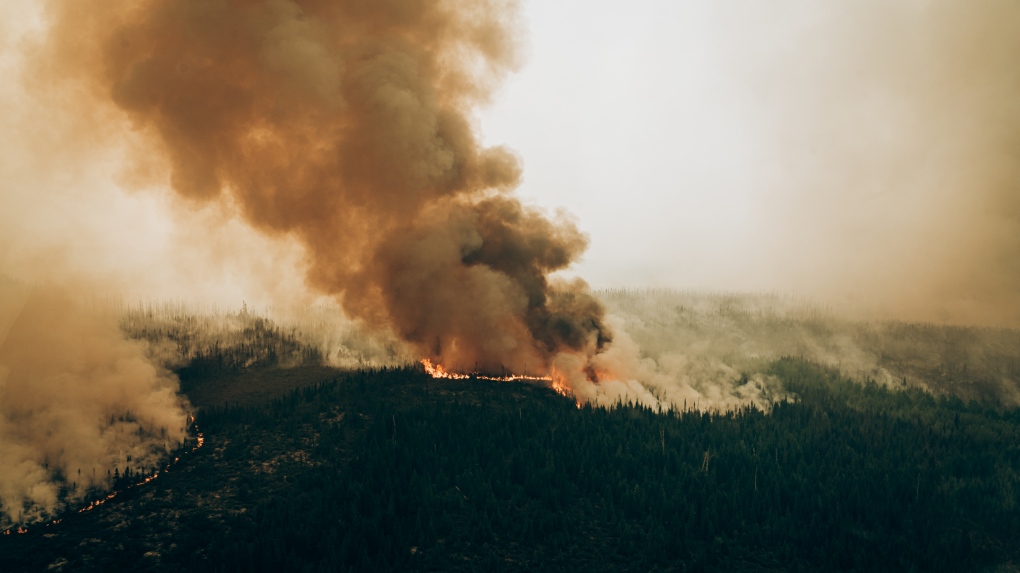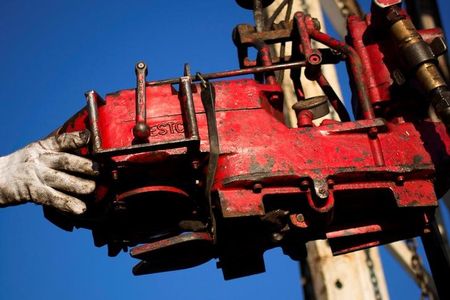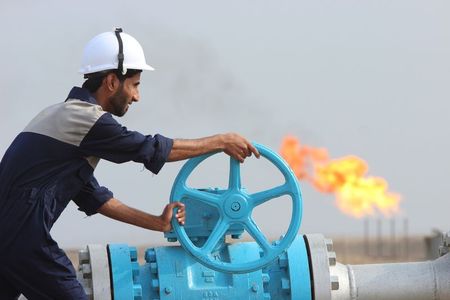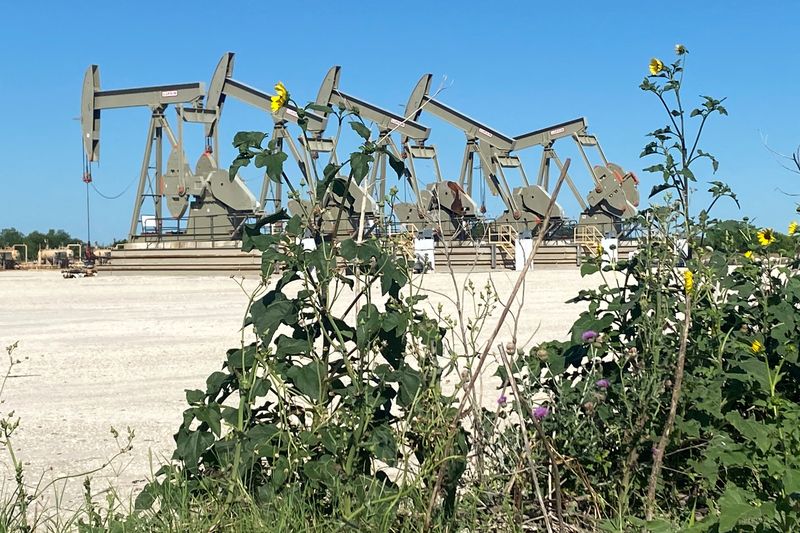Commodities
As Canada’s wildfires intensify, recruiting firefighters is tougher

Canada is wrestling with its worst-ever start to wildfire season, but recruiting firefighters is becoming increasingly difficult due to tight labor markets and the tough nature of the job, provincial officials say.
Limited resources could threaten Canada’s ability to douse fires, which are expected to get bigger and fiercer in future as a result of fossil fuel-driven climate change, risking more damage to communities and disrupting the country’s oil and gas, mining and lumber industries.
A Reuters survey of all 13 provinces and territories showed Canada employs around 5,500 wildland firefighters, not including the remote Yukon territory, which did not respond to requests for information.
That’s roughly 2,500 firefighters short of what is needed, said Mike Flannigan, a professor at Thompson Rivers University in British Columbia and wildfire specialist.
“It’s hard work, it’s hot work, it’s smoky work, and there are real issues with health impacts longer-term,” Flannigan said. “It’s getting harder to recruit and retain people.”
This year Ontario extended its application period, boosted marketing efforts and started covering training costs to secure more recruits. Applications were down in British Columbia and Nova Scotia, and Alberta had to do several rounds of recruitment to fill its ranks, officials said.
Canada’s provinces and territories share crews and equipment as required and call on international partners and the military in times of extreme need. But this year record-breaking blazes flared up simultaneously in the east and west, sparking competition for firefighters and aircraft.
“This was the worst-case scenario that everyone dreads – multiple areas of the country burning at the same time,” said Scott Tingley, forest protection manager for Nova Scotia.
Wildfire crews work 12-14 hour days, up to two weeks at a time, in smoke-filled, high-stress environments, often in remote wilderness areas.
The seasonal work, longer fire seasons and uncompetitive basic pay – ranging from C$30 ($22) an hour in British Columbia to C$.74 an hour in Manitoba – also deter people.
“We’re in competition with a whole bunch of other labour markets. It’s demanding physical work and it’s mentally taxing,” said Rob Schweitzer, executive director of BC Wildfire Service.
A week of cooler weather and rain eased some fires across Canada but 6.5 million hectares (16 million acres), an area the size of Lithuania, have already burned this year and unusually hot weather is expected to return.
FILLING THE GAPS
This year record fires have resulted in Canada deploying around 550 armed forces personnel and more than 1,700 international firefighters, paid for by the provinces, to beef up its stretched crews. As more wildfires threaten communities, provincial agencies are also increasingly leaning on structural firefighters to help protect homes.
But of the 126,000 structural firefighters in Canada, 90,000 are volunteers, according to the Canadian Association of Fire Chiefs, who are bearing the strain of protecting their own communities while also holding down day jobs.
At the height of the fires in May and June some provinces appealed for extra wildfire recruits. Alberta deployed 157 people who answered a government call-out, Nova Scotia sent out its first 30-person crew of volunteers last week and Quebec trained up an extra 300 volunteers and forestry workers who are not usually part of its wildfire service.
The extra manpower is not cheap. Annual national wildfire protection costs topped C$1 billion for six of the last 10 years, according to federal government data and have risen about C$150 million per decade since 1970.
Most experts expect them to keep climbing.
The federal government is spending C$38 million towards hiring, training and retaining firefighters and C$256 million over five years into an equipment fund, and working on a pilot project training structural firefighters. An Emergency Preparedness ministry spokesperson said the government recognizes the need for more investment.
“The men and women that fight wildland fires are doing a tremendous job but the fact is there’s not enough of them,” said Ken McMullen, president of the Canadian Association of Fire Chiefs.
Commodities
This indicator says oil prices will bottom soon: analysts

Oil prices are set to form a bottom in the coming months, McClellan Financial Publications analysts argue.
Recent gold price trends, adjusted forward by 19.8 months, can be compared to prices, a shift that aims to highlight how gold’s price movements tend to echo in oil prices after that specific interval.
While not a flawless model, it generally provides strong accuracy, the report states. Occasionally, discrepancies occur, such as when Russia’s invasion of Ukraine disrupted the oil market. However, after each such divergence, prices consistently strive to realign and return to their historical correlation.
“Coming up, this model says that we have a bottom due in mid-2024, followed by a rise toward the end of the year,” The McClellan Market Report says.
“That oil price rise is not going to be good news for any federal politicians who may be running for reelection in November. And if the recent rally in gold prices (just off the right end of this chart) keeps going higher, that is going to mean higher oil prices 19.8 months later,” it added.
In late 2023, crude oil prices declined earlier than expected, missing the predicted peak that gold price movements had indicated would occur later that year. However, oil prices have since realigned with the pattern, the report highlights.
The forecast indicates that the forthcoming bottom will ideally occur around June or July 2024. That said, it’s worth noting that turning points might not precisely follow this timeline and could occur slightly earlier or later.
remove ads
.
The key takeaway is that a bottom is expected, though more price declines may occur before reaching that point.
“Then as summer gets closer, we should turn to other indicators to home in on signs that the price bottom for oil is arriving, and/or that an upturn is starting,” the report notes.
Commodities
Oil prices set for positive week on demand hopes, Middle East tensions

Investing.com– Oil prices rose Friday, on track for a positive week, after signs of demand growth in both the U.S. and China, while tensions remained strained in the Middle East.
At 08:40 ET (12:40 GMT), rose 0.5% to $84.26 a barrel, while gained 0.6% to $79.73 a barrel.
Oil heads for weekly gains
Both benchmark contracts were set to post gains of around 2% this week, boosted by stronger-than-expected overall data from China, the world’s biggest oil importer. Signs of strong domestic demand pushed up hopes that oil demand will start picking up in the Asian giant.
China’s oil imports added to the positive overall tone as well, as although imports fell from the prior month, they came in above the levels seen last year.
Additionally, inventories surprisingly fell last week, and refining and fuel demand is set to increase tracking higher travel demand during summer.
“EIA data shows that U.S .commercial crude oil inventories fell by 1.36m barrels over the last week, different to the 500k barrel build the API reported,” analysts at ING said, in a note.
“The decline in crude oil stocks was driven by stronger exports, which increased by 550kk b/d WoW to 4.47m b/d, and stronger refinery activity.”
Israel-Hamas ceasefire appears unlikely, tensions high
Israel has continued its assault on the South Gaza city of Rafah, even as Hamas said the assault largely undermined ceasefire talks.
The attacks persisted even as the U.S. said it will suspend weapon shipments to Israel over the Rafah strikes.
remove ads
.
The Rafah strikes pointed to sustained geopolitical unrest, resulting a risk premium remaining alive in crude markets, given that geopolitical unrest in the Middle East could potentially disrupt supplies from the crude-rich region.
OPEC+ to roll over cuts?
Also supporting prices this week has been talk that the Organisation of Petroleum Exporting Countries. and allies, known as OPEC+, will continue to roll over output cuts, in an attempt to limit global supply.
“OPEC+ members will also become uncomfortable if starts flirting with $80/bbl, a level which is not too far away,” ING added.
“As we have mentioned previously, price weakness increases the likelihood that OPEC+ members will fully rollover their 2.2m b/d of additional voluntary cuts into the second half of the year, which risks overtightening the market later in 2024, assuming no downside surprises on the demand side.”
(Ambar Warrick contributed to this article.)
Commodities
Oil benchmark Brent above $84 on perky demand signals, MidEast conflict

By Natalie Grover
LONDON (Reuters) -Global benchmark hovered above $84 a barrel on Friday after data this week signalled growing demand in the U.S. and China, the world’s two largest crude users, while festering conflict in the Middle East added support.
Brent futures were up 50 cents to $84.38 a barrel at 1130 GMT. U.S. West Texas Intermediate crude climbed 57 cents to $79.83.
Falling inventories spurred by higher refinery runs coincided with data released on Thursday showing China’s oil imports in April were higher than last year on signs of improving trade activity.
China’s exports and imports returned to growth in April after contracting in the previous month.
“Ongoing signs of strength in demand in China should see commodity market remain well supported,” ANZ Research analysts said in a note.
Focus is also on U.S. inflation data – due next week – which could affect the Federal Reserve’s interest rate policy path.
In Europe, a Ukrainian drone attack set an oil refinery in Russia’s Kaluga region on fire, RIA state news agency reported on Friday, the latest salvo from Kyiv in what has become a series of tit-for-tat attacks on energy infrastructure.
Meanwhile, conflict in the Middle East continues, after Israeli forces bombarded areas of the southern Gaza city of Rafah on Thursday, according to Palestinian residents, after the latest round of negotiations to halt hostilities in Gaza came to naught.
As the conflict rages, it increases the potential for a broader conflagration in the region, particularly Palestinian group Hamas’ main supporter Iran, a key oil producer.
remove ads
.
“Israel’s groundwork for an intervention in Rafah and growing tensions on its Northern border are a reminder that geopolitical risks could persist through all of Q2 2024, at least,” Citi analysts said in a note.
Still, the bank sees prices easing through 2024, with Brent averaging $86 a barrel in the second quarter and $74 in the third quarter amid signs that global oil demand growth “appears to be moderating”.

 Forex2 years ago
Forex2 years agoForex Today: the dollar is gaining strength amid gloomy sentiment at the start of the Fed’s week

 Forex2 years ago
Forex2 years agoHow is the Australian dollar doing today?

 Forex1 year ago
Forex1 year agoUnbiased review of Pocket Option broker

 Forex2 years ago
Forex2 years agoDollar to pound sterling exchange rate today: Pound plummeted to its lowest since 1985

 Cryptocurrency2 years ago
Cryptocurrency2 years agoWhat happened in the crypto market – current events today

 World2 years ago
World2 years agoWhy are modern video games an art form?

 Stock Markets2 years ago
Stock Markets2 years agoMorgan Stanley: bear market rally to continue

 Economy2 years ago
Economy2 years agoCrude oil tankers double in price due to EU anti-Russian sanctions

































